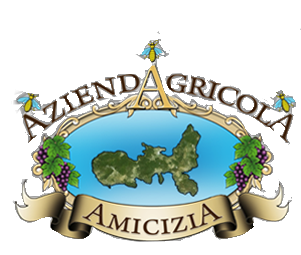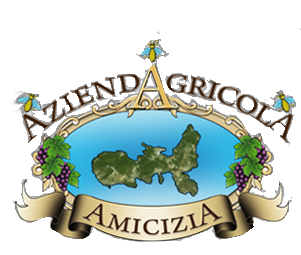Che cosa si intende per manutenzione e gestione del verde?
L’argomento e piuttosto ampio per poterlo descrivere in un solo paragrafo,si possono indicare alcune operazioni indispensabili.
Il verde e un patrimonio insostituibile che appartiene a tutti, per questo motivo va difeso e protetto.
La bellezza di un paesaggio non dipende soltanto dal disegno, dalla collocazione di piante, cespugli, fiori, rampicanti, annuali o perenni che lo compongono ma soprattutto dalla salute che lo contraddistingue.
Per questo motivo una manutenzione mirata e professionale può fare veramente la differenza.
Il prato e la superficie naturale più attraente, ma richiede cure e attenzioni tutto l’anno, temperature, eccessi o ristrettezze di elementi nutritivi,possono
danneggiarlo. Il taglio e l’irrigazione sono indispensabili come le diserbazioni selettive,l’arieggiatura e le concimazioni.
Alberi, cespugli e siepi richiedono potature, trattamenti anticrittogamici e antiparassitari, concimazioni bilanciate e la giusta irrigazione.
Le aiuole di annuali vanno scerbate costantemente,bagnate con regolarità e per mantenerle al massimo della loro bellezza le piantine vanno sostituite alla fine del loro ciclo vegetativo.
Le operazioni da compiere nell’arco dell’anno sono tante e differenti a seconda delle diverse tipologie dei giardini.
Un giardino curato ed armonioso diviene la naturale estensione della casa, esso si deve armonizzare con i gusti del proprietario e l’estrema variabilità che contraddistingue la nostra isola.
L’area verde e come un puzzle,perché tutto funzioni al meglio bisogna che piante e arredi si
compensino alla perfezione tra loro.
Nel progettare il verde un professionista tiene conto delle variabili di ogni pianta, valutando l’impatto che avrà non soltanto dal punto di vista estetico,ma anche su specifiche quali terreno, insolazione,risorse idriche,crescita e utilizzo finale.
Creare un bel giardino richiede esperienza e competenza e sempre consigliabile rivolgersi ad un esperto che potrà indicarci le soluzioni più indicate.
Cespugli
E possibile trapiantare la maggior parte dei cespugli anche quando sono adulti, ammesso che le loro radici siano preparate, e la chioma sia stata ridotta. Le conifere, comunque sono difficili da muovere quando sono molto grandi.
Le radici delle piante sono formate da quelle che ancorano la pianta al terreno e da altre più sottili che portano il nutrimento, poste alla punta delle prime. Alcune radici hanno una o due grosse radici che arrivano a considerevoli profondità, con una struttura non dissimile dai quella dei loro rami: come principio generale, considerate che lo sviluppo radicale sotterraneo è equivalente a quello della chioma.
Scavando troppo vicino al tronco di un arbusto, danneggerete sia le radici di sostegno che quelle di nutrimento: quanto più grande e più vecchio sarà l’esemplare tanto maggiore sarà il problema.
Fino a due o tre anni le piante hanno un sistema radicale limitato perché hanno poco peso da controbilanciare. Possono essere spostate facilmente, sempre tenendo presente che quanta più terra viene presa tanto meno danno si avrà per le radici.
I cespugli più vecchi dovrebbero essere preparati al trapianto con un anno di anticipo, tagliando il terreno intorno a essi con una lama, o una zappa per un raggio di 500 mm.
Ciò incoraggerà il pane di radici più fitto e più facile da muovere nella primavera seguente. Questi stessi arbusti dovrebbero venire potati energicamente per diminuire la superficie di traspirazione della chioma, meno irrorata a causa del parziale taglio delle radici.
Prima di togliere dal posto originario un cespuglio, scavate la fossa a cui lo destinate ( che sia ampi e profonda ). E’ importante che l’operazione in se sia più veloce possibile,cosicché le radici esposte non abbiano il tempo di asciugare ( l’ideale e compiere i trapianti con un tempo nuvoloso, senza vento, perché sia il sole che la secchezza dell’ aria sono dannosi ). Se vi sono ritardi nel trapianto, porre il cespuglio i uno scavo provvisorio.
Per prelevare il cespuglio dal suo alloggiamento, scavare intorno alle radici il più gentilmente possibile, con un forcone, liberandole. Tagliare le radici troppo lunghe. Lavorando attorno alla pianta, rompete il terreno e fate leva verso l’alto.
Quando il cespuglio è libero, esaminate lo stato delle radici e la loro dimensione, allargando alla giusta misura la buca a cui lo destinate. Prima di procedere al trapianto, mettete sul fondo della buca una forcata di concime organico o di compost e una manciata di farina d’ossa.
Trasferite il cespuglio con l maggior parte possibile della sua terra; allargate le eventuali radici libere, tagliare con le cesoie quelle rotte e riportate la terra precedentemente tolta, scuotendo il cespuglio in modo da non lasciare buche.
Prima del riporto finale, conficcate un piolo nel terreno senza danneggiare le radici. Completare il riempimento pestando la terra, finché alla fine, essa abbia la stessa altezza di prima senza coprire il collarino del tronco. Se il terreno è asciutto, innaffiate abbondantemente per permettere alla terra di sedimentarsi correttamente attorno alle radici. Infine, legate il cespuglio al piolo di sostegno con in legaccio di plastica.
Perenni
Crescono in fretta e, se siete all’inizio dell’impianto del vostro giardino, hanno il vantaggio di diventare adulte in una sola stagione; d’altronde, e sbagliato pensare che abbiano una vita troppo lunga: qualsiasi vegetazione muore, a un certo punto, di vecchiaia, dipende solo dalla durata della sua vita ( i lupini per esempio, non resistono più di cinque anni, mentre le peonie arrivano anche a dieci ). Potete essere piuttosto energici nella divisione delle vostre perenni perché è molto improbabile che le danneggiate definitivamente; se non farete questa operazione fino a primavera, e facile che non riusciate a riconoscerle senza fogliame e potreste distruggerne il punto vitale o i getti potenziali.
Molte erbacee si riseminano da sole e uno dei grandi piaceri di una bordura mista e scoprire nel corso della stagione alcuni esemplari non previsti: questi risultati sono molto più interessanti di quanto possiate aver progettato voi.
Al contrario degli arbusti legnosi, le erbacee tendono a morire fino al livello del terreno al termine della loro stagione.
Questo tipo di piante costituisce l’elemento principale di una bordura fiorita: gran parte di esse fioriranno molto bene vicino a cespugli e il loro inserimento in una bordura mista e molto più facile che in una solo di erbacee.
Una bordura di erbacee perenni ha bisogno di essere larga due volte l’altezza del tipo più alto delle essenze che sono normalmente alte sino a due tre metri: tali grandezze sono spesso una sorpresa e si potranno correggere queste proporzioni solo se si terranno presenti; che con ogni probabilità dovrete allargare l’aiuola in autunno. Inoltre, le perenni tendono ad allargarsi verso il prato rendendo difficoltosa la sua manutenzione ( prendendo in considerazione l’ipotesi di bordare l’aiuola con pietre oppure mattoni ).
Il terreno dovrebbe essere preparato con alcune settimane d’anticipo prima di piantare le perenni, così che abbia modo di sedimentare.
Vangate il terreno il più profondamente possibile, incorporandovi concime organico o farina ossea.
Al meglio, preparate la zona in autunno per piantare in primavera. In un terriccio particolarmente leggero potrete piantare anche in autunno.
La buca per ogni esemplare dovrebbe essere profonda abbastanza da contenere il pane delle radici e il ceppo della pianta alla giusta profondità.
Le distanze d’ impianto dei gruppi dovrebbero essere 230 – 300 mm per le specie più basse, come le primule 300 – 380 mm per specie medie come l’erigerum, mentre specie di crescita maggiore dovrebbero avere una distanza tra loro di 460 – 600 mm.
La successiva manutenzione delle perenni consiste nei puntelli per quelle più alte, facilmente abbattute dal vento; dopo la fioritura, ripulire la pianta, potrebbe dare forza sufficiente per conservarne un’altra.
Se diventano troppo invadenti o assumono un portamento antiestetico ( per esempio svuotandosi al centro ), dividete le vostre piantine in autunno.
Togliete eventuali erbacce e fate leva con due forconi incrociandoli. Nel caso di tuberi carnosi, come le peonie, tagliate la massa con una vanga e sarete in grado di formare più piantine.


